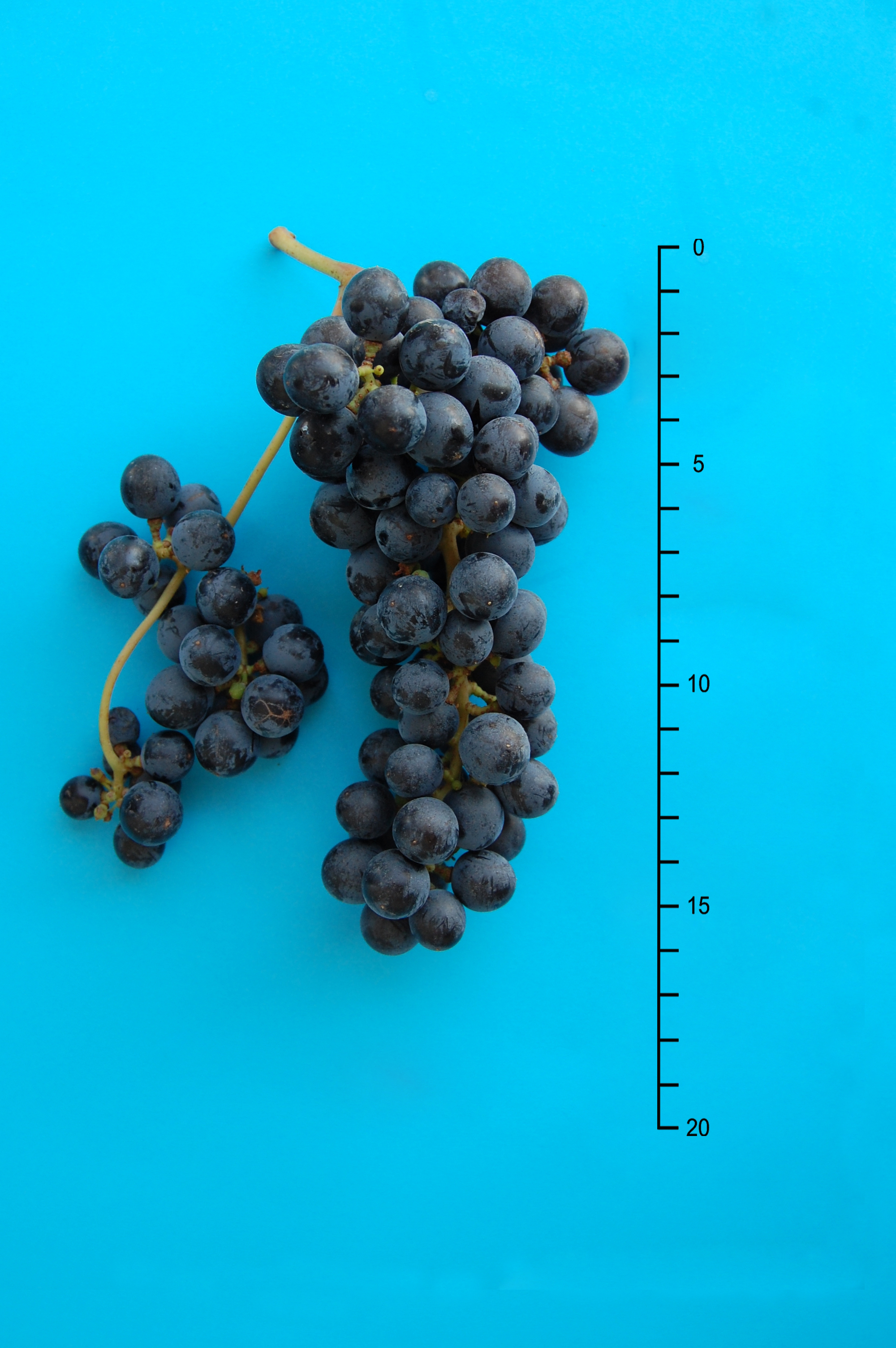Merlot Kanthus
| Denomination: | 'Merlot Kanthus' |
|---|---|
| Botanical Name: | Vitis vinifera |
| Applicant/Holder: |
Istituto Di Genomica Applicata Via Jacopo Linussia 51 Udine 33100 Italy Tel: 39 0432 62991 Università degli Studi di Udine Via Palladio 8 Udine 33100 Italy Tel: 39 0432 556111 |
| Breeder: |
Simone Diego Castellarin, Vancouver, British Columbia Guido Cipriani, Faedis UD, Italy Gabriele Di Gaspero, Cividale del Friuli UD, Italy Enrico Peterlunger, Codroipo UD, Italy Michele Morgante, Tricesimo UD, Italy Raffaele Testolin, Udine UD, Italy |
| Agent in Canada: |
Bereskin & Parr Box 401, 40 King Street West Toronto, Ontario M5H 3Y2 Canada Tel: 416-364-7311 |
| Application Date: | 2015-02-13 |
| Provisional Protection:: | 2016-02-11 |
| Application Number: | 16-8818 |
| Grant of Rights Date: | 2020-12-14 |
| Certificate Number: | 6335 |
| Grant of Rights Termination Date: | 2045-12-14 |
Variety Description
Varieties used for comparison: 'Gänsfü▀er' and 'UD-32.078'
Summary: The petiole of the mature leaf of 'Merlot Kanthus' is moderately longer than the middle vein while the mature leaf petiole of 'Gänsfü▀er' is moderately shorter than the middle vein. The upper side of the mature leaf blade of 'Merlot Kanthus' has a very low to low proportion of main veins with anthocyanin colouration while that of 'UD-32.078' has a medium proportion of main veins with anthocyanin colouration. The berry of 'Merlot Kanthus' begins ripening early to mid-season while the berry of 'Gänsfü▀er' begins ripening mid to late season.
Description:
YOUNG SHOOT TIP: fully opened, sparse prostrate hairs, very weak to weak intensity of anthocyanin colouration of prostrate hairs, absent or very sparse erect hairs
SHOOT: dorsal side of internodes is red, dorsal side of nodes is green and red, ventral side of internodes and nodes are green, absent or very sparse erect hairs on internodes, erect to semi-erect attitude (before tying)
WOODY SHOOTS: orange brown, absent or very sparse erect hairs on internodes, early to mid-season bud burst
TENDRILS: long to very long
PETIOLE: moderately longer than middle vein of mature leaf blade
YOUNG LEAF BLADE: upper side green with anthocyanin spots, absent or very sparse prostrate and erect hairs between and on main veins on lower side
MATURE LEAF BLADE: five lobes, medium sized, wedge-shaped, weak blistering on upper side, wide open lobes of petiole sinus, very low to low proportion of main veins on upper side with anthocyanin colouration
MATURE LEAF BLADE (LOWER SIDE): absent to very sparse prostrate hairs between main veins, absent or very sparse erect hairs on main veins
UPPER LATERAL SINUSES: medium depth, slightly overlapped lobes
TEETH OF LEAF MARGIN: medium to long, medium length to width ratio, both sides convex
FLOWER: hermaphrodite type
BERRY BUNCH: large, medium density, medium to long peduncle of primary bunch
BERRY: begins ripening early to mid-season, small to medium sized, broad ellipsoid, moderately easy to detach from pedicel, no particular flavour, seed formation complete
BERRY SKIN: blue black (without bloom), medium thickness
BERRY FLESH: moderately firm, absent or very weak intensity of anthocyanin colouration
Origin & Breeding History: 'Merlot Kanthus' originated from a controlled cross conducted between the female parent variety 'Merlot' and the male parent variety '20/3' made by the University of Udine and the Institute for Applied Genomics in Udine, Friuli Venezia Giulia Region of Italy in June 2002. The controlled cross was conducted using cluster isolation and flower emasculation in the seed parent and cluster isolation in the pollen donor prior to flowering. The first asexual multiplication occurred in 2005. The resulting seedling was selected at the Servadei experimental farm in Udine, Italy based on resistance to mildew, tolerance to Oidium, medium vigour, chemical composition of the berries, wine quality and grafting affinity. 'Merlot Kanthus' was selected and designated in 2010. The genetic identity of the seedling was verified by DNA microsatellite markers. From 2011 to 2013, the variety was evaluated in production plots of 25 or 100 individuals in two ecologically different sites, Udine and Fossalon Grado, on rootstocks 1103 Paulsen and Kober 5BB.
Tests & Trials: The detailed description of 'Merlot Kanthus' is based on the UPOV report of Technical Examination, application number 20150365, purchased from the Community Plant Variety Office in Angers, France. The trials were conducted at the Bundessortenamt in Hannover, Germany from 2017 to 2018.
Click on image for larger view

Grapevine: 'Merlot Kanthus'
Click on image for larger view

Grapevine: 'Merlot Kanthus'
Click on image for larger view

Grapevine: 'Merlot Kanthus'
- Date modified: